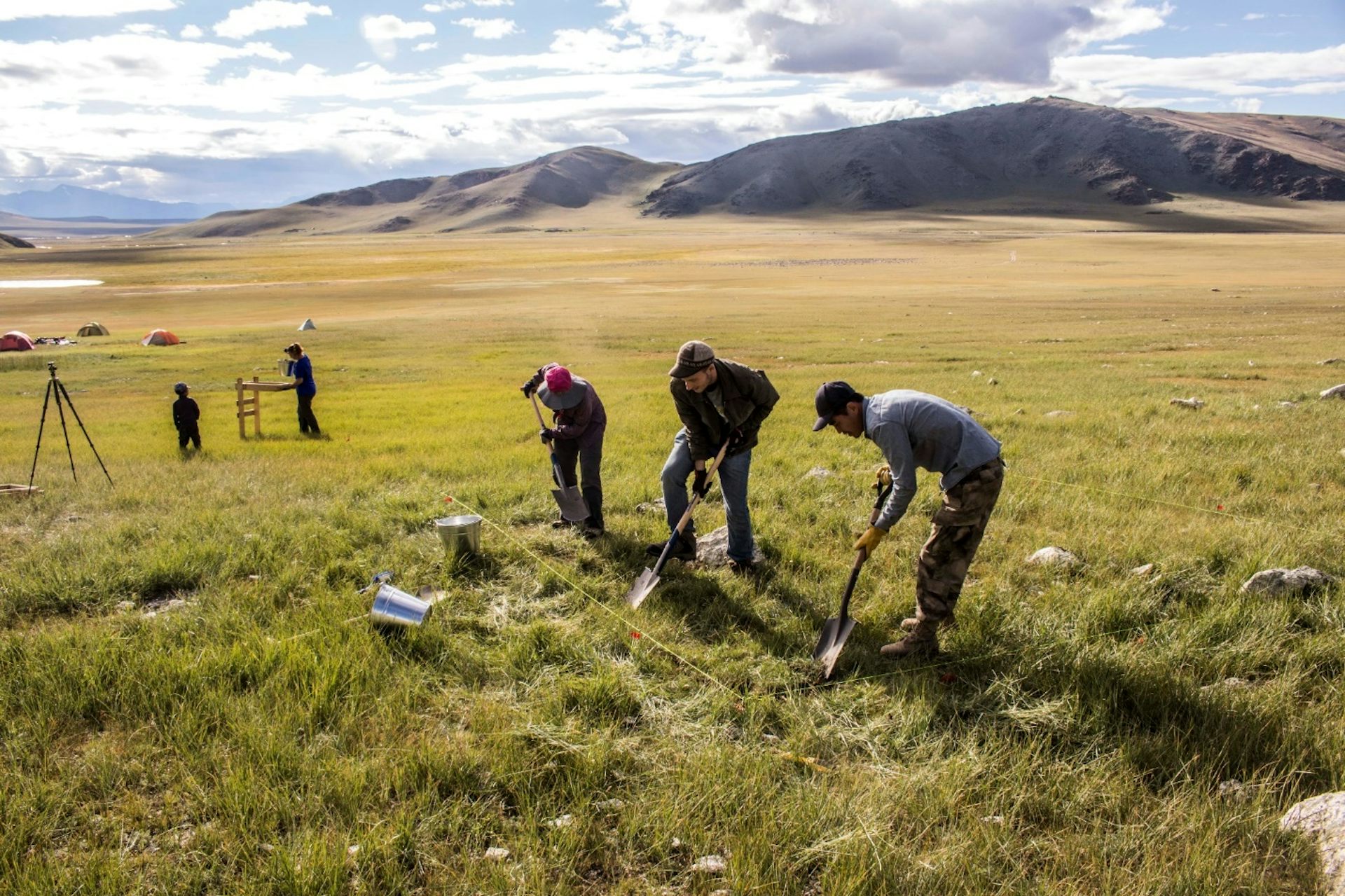Anthropology
Related: About this forumHumans domesticated horses - new tech could help archaeologists figure out where and when

Archaeologists investigate an ancient habitation site in western Mongolia, seeking clues to the early history of domestic horses.
William Taylor, CC BY-ND
March 2, 2020 3.38pm EST
William Taylor, University of Colorado Boulder
In the increasingly urbanized world, few people still ride horses for reasons beyond sport or leisure. However, on horseback, people, goods and ideas moved across vast distances, shaping the power structures and social systems of the premechanized era. From the trade routes of the Silk Road or the great Mongol Empire to the equestrian nations of the American Great Plains, horses were the engines of the ancient world.
Where, when and how did humans first domesticate horses?
Tracing the origins of horse domestication in the prehistoric era has proven to be an exceedingly difficult task. Horses – and the people who care for them – tend to live in remote, dry or cold grassland regions, moving often and leaving only ephemeral marks in the archaeological record. In the steppes, pampas and plains of the world, historic records are often ambiguous or absent, archaeological sites are poorly investigated and research is published in a variety languages.
At the heart of the issue is a more basic struggle: How can you distinguish a “domestic” animal from its wild cousin? What does it even mean to be “domesticated”? And can scientists trace this process in archaeological sites that are thousands of years old and often consist of nothing more than piles of discarded bones?
More:
https://theconversation.com/humans-domesticated-horses-new-tech-could-help-archaeologists-figure-out-where-and-when-131831
Sunlei
(22,651 posts)"....they found the horses descended from one of the earliest known groups of domesticated horses, called Botai horses, found in northern Kazakhstan 5,500 years ago. It was a surprising find for the research team. Archaeologists had been hoping to prove Botai horses were the ancient ancestors of modern domestic horses."
ref https://www.nationalgeographic.com/news/2018/02/przewalski-wild-horses-botai-kazakhstan-spd/
I think they'll find horses (and canine types for that matter) have been walking with humans forever. Were domesticated in many ways for a lot longer than even 40,000 plus years.
Archaeological sites are more than just piles of bones. there's dna in the soils, in permafrost and ice cores. Horses have always been one of only a few species that can be taken from the wild, domesticated and then go back to a life in the wild without issue.
cilla4progress
(25,867 posts)to domesticate mine! 🤣🤣🤣